Therapy Gems ©
More on Buzz Words Versus Meaningful Words
Buzzwords III: Why We Use Vague Buzzwords, Psychobabble, and Vague Jargon
The precipitating event for this article is the following comments in an article by Columnist Rex Huppke on how buzzwords are used in the business world. Huppke wrote “Author explains buzzwords for office English speakers” in the Chicago Tribune, April 17, 2016. Quoting James Sudakow, author of a book about buzzwords in the business world, Huppke wrote,
‘I think it becomes like this language and it allows people to look like they’re part of a special group that knows what this stuff means’ … [Sudakow] said. ‘I think that’s why its [sic] so prevalent in consulting. They’re brought in to be experts on stuff and if they have their own language that makes them seem like they’re even greater experts. It’s the opposite…. It’s like their credibility actually goes down because people wonder, “Why you can’t just use normal words?”’ (Section 2, p3) [italics added].
After reading those comments, I thought I should write about our motivation, as  Psychotherapists, to use buzzwords.
Psychotherapists, to use buzzwords.
The Buzzword Motivation
I have observed eight motivations for using buzzwords.
Shorthand communications
Ease of making a statement
Identification with others who use them
Status or Appearance of being knowledgeable
Credibility, sounding expert
Distance from the object of the buzzword
Purposeful obfuscation, vagueness, or lack of clarity
Lack of understanding of appropriate professional language
Shorthand – The simplest, most benign reason is that we think we are communicating a large concept in a small package. We may think we are using a robust term in order to convey a complex situation. We imagine “can’t handle it” or “acting out” shrinks a lot of information about client behavior into a single term that communicates substantial meaning. If we can access or picture the meaning, we think the word has communicated the meaning we have imagined. If we see the client’s distress when she uses a buzzword, we think or assume we know what she means – with a lot of emotional disturbance packed into one or two words.
Of course, each person has his or her own connotative imagery for the buzzword. Therefore, what makes it a buzzword is that it no longer has a specific shared meaning. The ‘large concept in a small package’ is actually ambiguous! Often it is also pejorative. The word usually has been co-opted to mean broad categories of meaning which lack the clarity required for professional communications.
Indeed, many of these words developed from meaningful professional jargon. They became ambiguous once they were used imprecisely by professionals. Or they came into common parlance in which specificity is not only downplayed, it is often avoided! For instance, when Hans Selye applied the word “stress” – formerly used mainly in engineering — to describe an internal physiological state in which certain organs are activated and bodily damage results, the meaning was clear and specific. Now, the word is most often used to describe either external stressors or an emotional state of feeling pressure or feeling overwrought with too many challenges. You can see it has lost most of its connection with the original professional jargon. It no longer has one clear and specific meaning.
Let’s examine an analogous problem. Jet propulsion, for example, still means causing movement by forcing gasses to travel at high speed. Imagine if we used it to have emotional meanings such as, “I feel a lot of inner propulsion, jet propulsion.” “Too much propulsion is coming at me!” Oh, yes, I can relate to that idea. But after the term from physics becomes co-opted as an ambiguous term for a mental state, then we would soon have to find a new term for whatever it is that jet engines do.
Many of us worked in settings where buzzwords were commonly used and accepted. In those settings, a buzzword may have had a short-hand meaning understood by practitioners in that institution. Sometimes, the culture of the workplace includes a meaning for a buzzword, that is, a meaning shared within the institution. So, for many clinicians in many settings, using the word “issues” or “acting out” may appear to sound professional and comprehensible, a shorthand way of communicating with other professionals in that setting. I can imagine in a residential treatment center a statement such as “Because he has so many issues [i.e., emotional conflicts, painful or traumatic experiences with hostile feelings], he acts out [i.e., displays angry feelings and perhaps destructive behavior] when he is frustrated.” Most of the staff in that setting know the behavior to which the statement refers. 
However, in an outpatient setting, those same terms could have a variety of meanings. When I hear “issues” or acting out,” I often find myself asking, “What do you mean by that?” The shorthand has ultimately failed to communicate.
Buzzwords obscure deeper understandings. Buzzwords gloss the surface so the clinician does not have to think more incisively and deeply. Recently, an Intern used the word “issues” several times in a diagnostic report. Careful reading of the text showed four meanings for “issues.” In one place, “issues” meant all the person’s internal conflicts or emotional problems. In another, “issues” meant foci of concern. Another meant very serious emotional problems. The last meant significant deviance from expectations. I explained that using “issues” obscured the richer thoughts she may have about the client.
I asked her to work to avoid “issues.” That proves to be a challenge; such is the compelling pressure to use imprecise language. I asked her to re-write those sentences to specify the meaning more exactingly, without using the word “issues.” The first use of “issues” became “emotional symptoms most distressing to the client” (which she then specified). That has a more specific meaning than “he spelled out his issues.” The second became “symptoms for which we set treatment goals.” That has more precision than “he has serious issues.” The third became “unusual mannerisms, such as frequently tapping 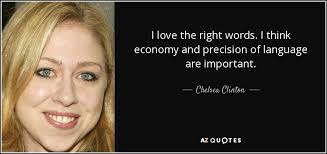 on his forehead.” That also is more specific and more useful. The fourth became “disagreed with therapist’s assessment of his symptoms as being consistent with PTSD, arguing that something that long ago could not be as crucial to his health as the therapist had asserted.” The Intern had proven the point that buzzwords obscure more than they reveal. She also proved that a richer meaning can be hidden behind a buzzword; a little clinical thought leads to deeper insight into the client’s functioning and dynamics.
on his forehead.” That also is more specific and more useful. The fourth became “disagreed with therapist’s assessment of his symptoms as being consistent with PTSD, arguing that something that long ago could not be as crucial to his health as the therapist had asserted.” The Intern had proven the point that buzzwords obscure more than they reveal. She also proved that a richer meaning can be hidden behind a buzzword; a little clinical thought leads to deeper insight into the client’s functioning and dynamics.
Ease of making a statement – Similar to a motivation to use shorthand language, the clinician may find it easy to use buzzwords. They readily ‘roll off the tongue.’ We often use them in common conversation. But in the clinical situation, the motivation could also be to allow the clinician to avoid having to stop to think more deeply or even to let the clinician gloss over a client emotion.
Buzzwords can also be used in a highly pejorative or dismissive way. It’s much easier to say “Attention-seeking” than to think out the true dynamics and explain them, such as, “Anxious attachment, leading to behaviors which elicit a response from mother so he knows he has value to her.” So this easy and often pejorative use of buzzwords is a 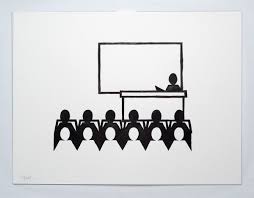 particularly important failure of clinical thinking. Easy use of buzzwords is inevitably unhelpful to the client, who becomes somewhat distanced. It causes the therapist to think on the surface rather than fully grasp the client’s emotions and dynamics.
particularly important failure of clinical thinking. Easy use of buzzwords is inevitably unhelpful to the client, who becomes somewhat distanced. It causes the therapist to think on the surface rather than fully grasp the client’s emotions and dynamics.
Identification with other professionals – A natural tendency amongst trainees and newer therapists is the quest to know how professionals behave, how to become socialized to the work. Identification with valued professionals is a process for acquiring those behaviors. So if a supervisor uses buzzwords, the trainee is likely to do so. If the supervisor does not ask for clarification of those terms, that omission tacitly reinforces the usage. It also teaches the trainee to stay towards the surface of behavioral observations. When I challenge the use of buzzwords, trainees and, sometimes, licensed professionals, tell me they have never before been asked to stop using those words. I then ask them to look more deeply into the client’s behavior, a task which will lead to better understanding and more effective selection of interventions.
Status or Appearances – As Sudakow pointed out, we may feel a need to enhance our appearance of possessing a) professional status in the mind of the clients or our colleagues, b) a sense of importance in our own minds, or c) belonging in the in-group of the institution, being a member of the team. If, however, the organization does not support buzzwords, using them reduces status! If the organization supports them, the clinician can lead by avoiding them, speaking with more depth, and asking others to clarify meanings.
These use of some of the buzzwords may often be judgmental and pejorative! The team objectifies the client by the use of terms which place the person in a pejorative category.
We can counter that by re-framing the behavior upon which we are focusing as protective, adaptive, the best the client can do, motivated by positive purpose, or in other terms which shift the focus to what the client is doing effectively. Recently, for instance, a client whose former use of opiates was extremely heavy lapsed twice in one week. Rather than use buzzwords such as ‘addict,” “resistance,” or “weak,” I described his behavior as a success in that he cut down his use by 75% in just a few weeks. The focus of discussion shifted from his pathologies to how to assist his sobriety to get to 100% abstinence. In fact, he progressed more rapidly than his history and challenges might have predicted.

Credibility – Similar to a motivation of special status, the professional may try to sound more like an expert. But, when using vague language, have we communicated an unmistakable message which the client can use effectively? Expertise used for show just does not connect well. It leaves room for misunderstanding. I once sat with a group of professionals observing a consultant through a one-way mirror. He told the distressed woman in his office phrases such as “You’re projecting.” “That is passive aggressive behavior.” “You are needy.” The observers nodded. Yes, her behavior could be adequately described by these terms. But I didn’t think she understood any of it. In terms used in Motivational Interviewing, the consultant’s labels produced more sustain talk which led to more of these interventions – which seemed more confrontive than interpretive. That may have gratified the consultant and impressed the professionals, but I did not think the interchange helped the client. She may have found the doctor to be a credible psychiatrist, but the language did not seem to help her.
Buzzwords obfuscate deeper meanings. They lead us to the surface rather than the depths. They lead us to objectify the client – which is incompatible with core therapeutic conditions.
So, just as we want the client to be clear and to express feelings and thoughts with some clarity, and just as we push the client to probe feelings and thoughts, so we should expect the therapist to think and speak with clarity and accuracy.
Distancing – Buzzwords can be used to maintain emotional distance from another person. Such words as “over-reactive,” “needy,” or “attention-seeking” set the therapist at a seeming distance – a judgmental distance — from the distress or emotional whirl of the client’s life. We frequently see this kind of response when the client has a Borderline Personality Disorder, bipolar symptoms, attachment difficulties, substance abuse, or hostile behavior. By labeling them, respectively, as needy, moody, cold, weak, or full of anger, in effect we are being judgmental and dismissive of the client’s personhood. The person becomes the disorder rather than a person who is affected by the disorder. The paradox is that the therapist’s emotional distance, which may lead to more punitive or directive interventions, may also be a stimulus for the very emotional reactions the therapist is labeling!
Purposeful obfuscation — Often, we are intentionally vague. Perhaps we are writing a 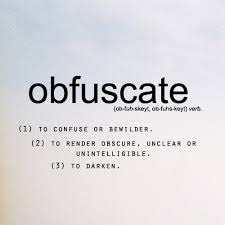 report and we conclude the client will be upset by a statement in the report. Perhaps we create a document that is going to a reader who is unfamiliar with mental health jargon. Perhaps we want to present the client in a favorable light. We have many reasons for writing or speaking in vague terms. But, just as we would not let the client use the defense of vagueness in order to suppress painful feelings and thoughts, we should not let professionals use vagueness in order to obfuscate.
report and we conclude the client will be upset by a statement in the report. Perhaps we create a document that is going to a reader who is unfamiliar with mental health jargon. Perhaps we want to present the client in a favorable light. We have many reasons for writing or speaking in vague terms. But, just as we would not let the client use the defense of vagueness in order to suppress painful feelings and thoughts, we should not let professionals use vagueness in order to obfuscate.
In a recent report to a pediatrician of a seven year-old boy, the psychologist did just that. He used obscure language, such as, “On scale three, the client scored two standard deviations from the mean for global behavioral scores.” The pediatrician sent the letter back with a note that she could not understand it! The motive for the original letter was to disguise the worst findings from the client’s mother, who received a copy of the note. But then she appeared at the clinic asking for an explanation of the letter. The re-written letter clarified each point in plain language. “On a scale measuring behavioral problems, such as disturbing others, occasional hitting of other children, and breaking or throwing objects in anger, J’s score suggested he is in the top two percent, meaning only 2-3 children in 100 show disruptive or aggressive behavior to that degree.”
Lack of understanding of appropriate professional language. A mental health 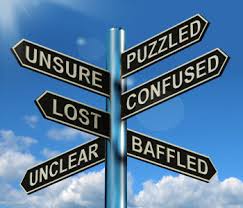 professional has a Bachelors degree with a major or minor in psychology, social work, or an overlapping field, then a Masters degree in a mental health discipline, an internship, and a post-Masters supervised training experience. The latest standard for a Masters is around 60 graduate hours of course work. A Psychologist has completed several more courses than that and original research. During all that intensive training, the professional learns an enormous number of psychological terms, theories, research findings, methods, and principles. To learn how to apply all those terms to the labeling of client behavior takes years. I try to model how a professional ought to be able to explain all behavioral phenomena and patterns. In these papers on buzzwords, a consistent theme has been the proper use of professional terminology. One reason for the use of vague terms is that trainees may not have been held to the standard of proper labeling of all their observations. Further, they have learned so much of the jargon in the abstract and may not have enough training in applying terminology to real situations. Let’s make sure we communicate that learning to explain the client’s actions and one’s own interventions in appropriate professional language is a goal. We understand this skill is always a work in
professional has a Bachelors degree with a major or minor in psychology, social work, or an overlapping field, then a Masters degree in a mental health discipline, an internship, and a post-Masters supervised training experience. The latest standard for a Masters is around 60 graduate hours of course work. A Psychologist has completed several more courses than that and original research. During all that intensive training, the professional learns an enormous number of psychological terms, theories, research findings, methods, and principles. To learn how to apply all those terms to the labeling of client behavior takes years. I try to model how a professional ought to be able to explain all behavioral phenomena and patterns. In these papers on buzzwords, a consistent theme has been the proper use of professional terminology. One reason for the use of vague terms is that trainees may not have been held to the standard of proper labeling of all their observations. Further, they have learned so much of the jargon in the abstract and may not have enough training in applying terminology to real situations. Let’s make sure we communicate that learning to explain the client’s actions and one’s own interventions in appropriate professional language is a goal. We understand this skill is always a work in 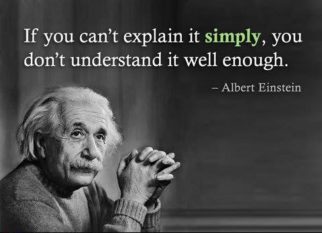 progress.
progress.
In summary, most often the use of buzzwords derives from the needs of the clinician, not the benefit of the client. The clinician may presume the words communicate what the clinician intended. But that is not often the case. Clinicians may have learned to use buzzwords in a training situation, but the time has come to stop using them.
I will confess that it is a challenge. In a typical day, my trainees will hear me start the word that sounds like “iss…” or the word “handle” may emerge. Fortunately, I am able to catch myself and to find a clearer way to explain. We hear these words so often that we have to work to avoid them so we can speak more clearly. Doing so will pay off in more effective clinical work.
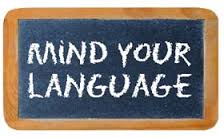
************************
© Don D Rosenberg, Version 1.0 2017